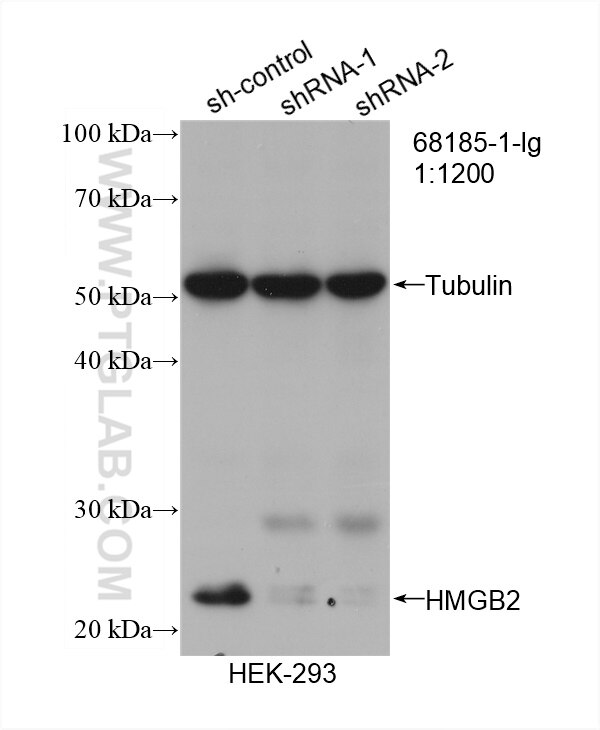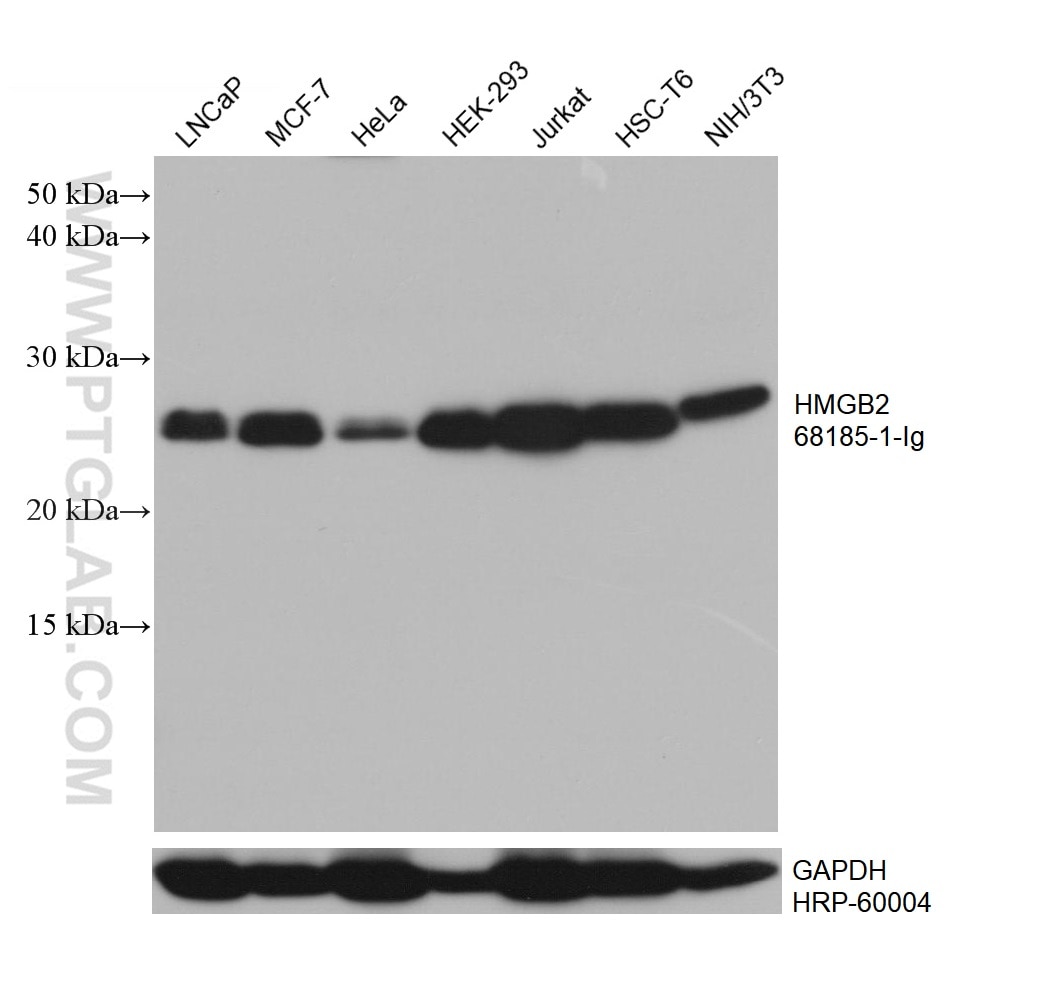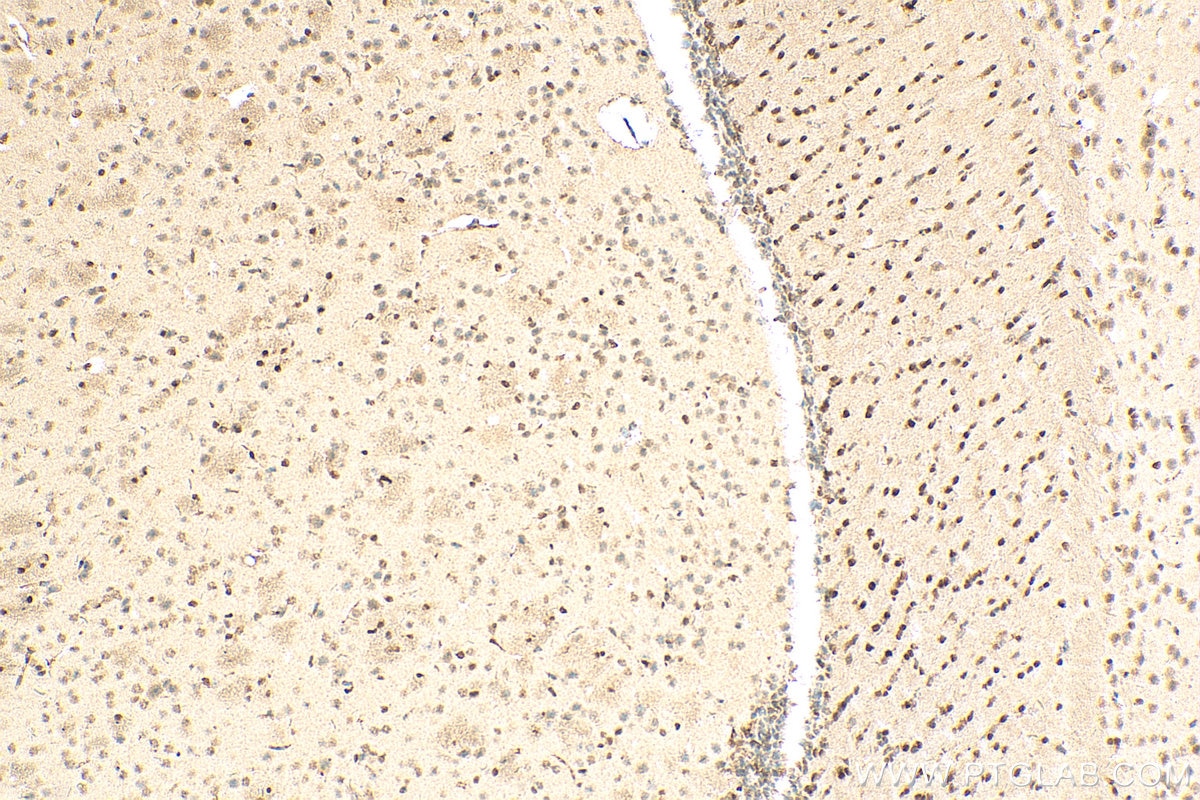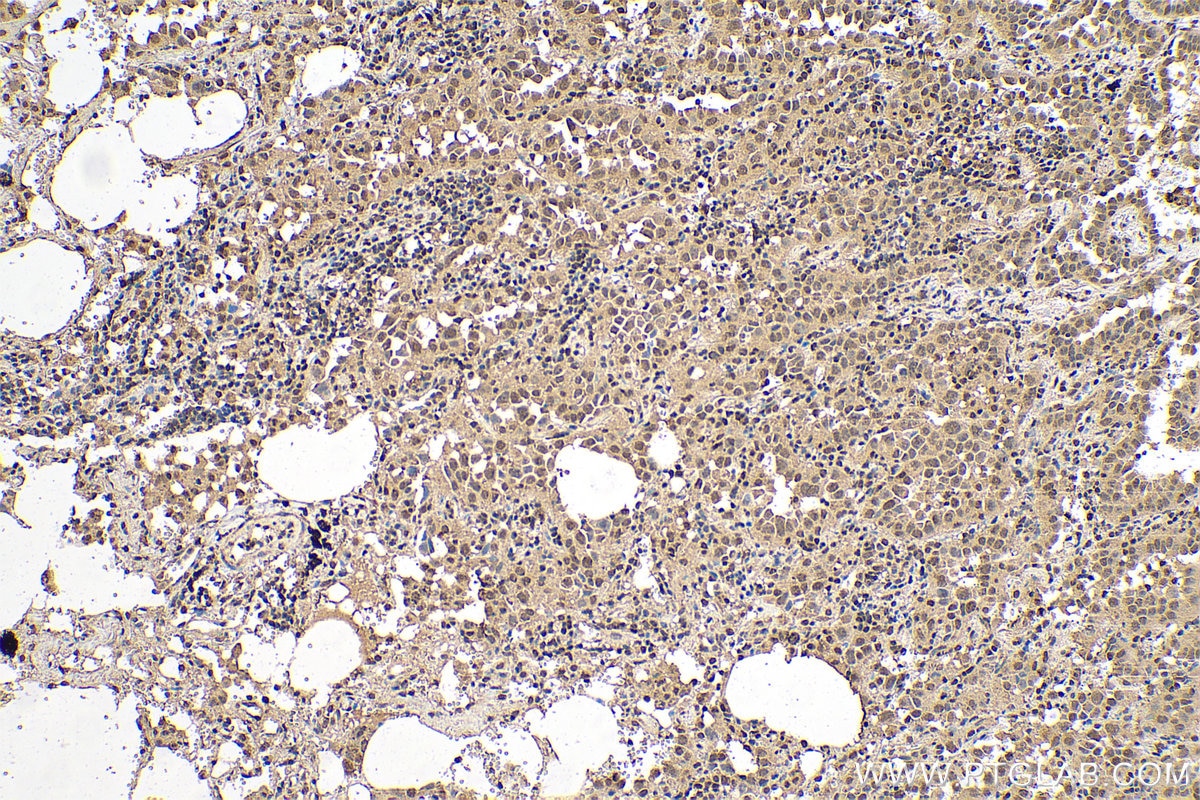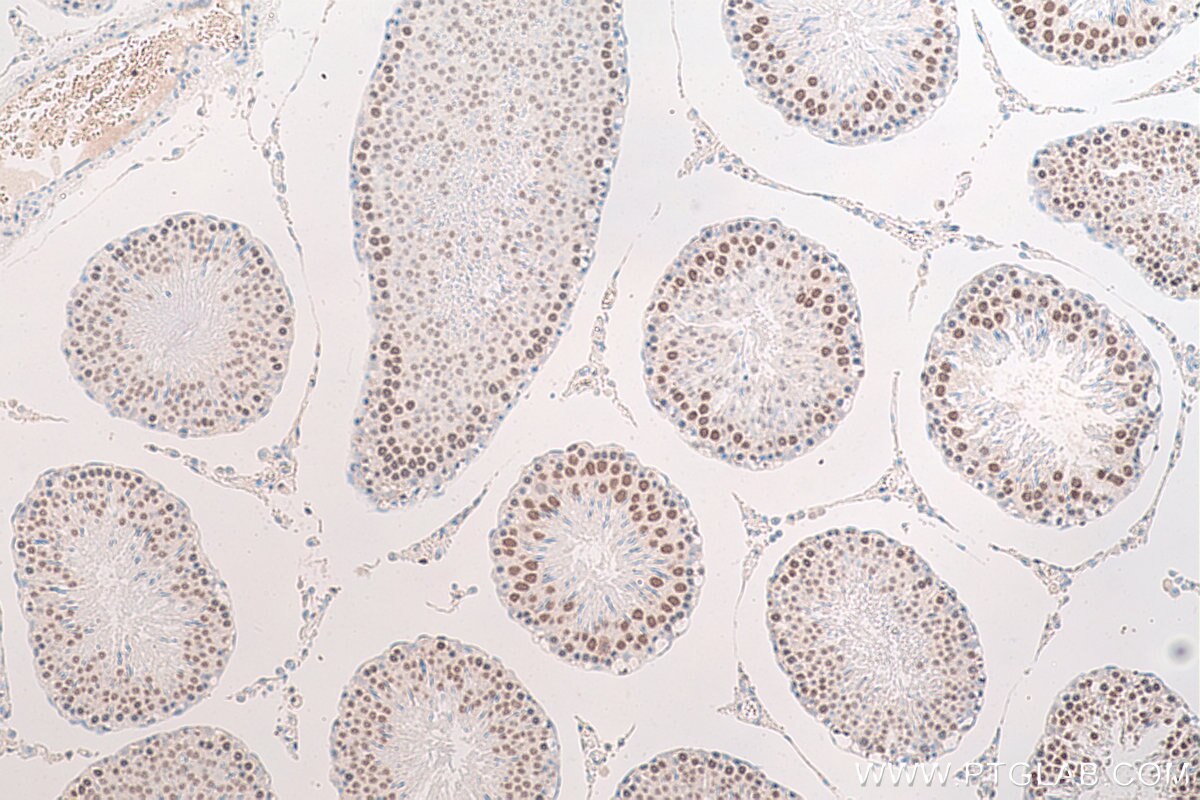Validation Data Gallery
Tested Applications
Recommended dilution
| Application | Dilution |
|---|---|
| It is recommended that this reagent should be titrated in each testing system to obtain optimal results. | |
Product Information
68185-1-PBS targets HMGB2 in WB, IHC, Indirect ELISA applications and shows reactivity with human, mouse, rat samples.
| Tested Reactivity | human, mouse, rat |
| Host / Isotype | Mouse / IgG1 |
| Class | Monoclonal |
| Type | Antibody |
| Immunogen | HMGB2 fusion protein Ag7989 相同性解析による交差性が予測される生物種 |
| Full Name | high-mobility group box 2 |
| Calculated molecular weight | 24 kDa |
| Observed molecular weight | 24-28 kDa |
| GenBank accession number | BC000903 |
| Gene Symbol | HMGB2 |
| Gene ID (NCBI) | 3148 |
| Conjugate | Unconjugated |
| Form | Liquid |
| Purification Method | Protein G purification |
| UNIPROT ID | P26583 |
| Storage Buffer | PBS only , pH 7.3 |
| Storage Conditions | Store at -80°C. |
Background Information
High mobility group protein B2 (HMGB2) belongs to a family of highly conserved proteins that contain HMG box domains (11246022,14871457). All three family members (HMGB1, HMGB2, and HMGB3) contain two HMG box domains and a C-terminal acidic domain. HMGB1 is a widely expressed and highly abundant protein (14871457). HMGB2 is widely expressed during embryonic development, but it is restricted to lymphoid organs and testis in adult animals (11262228). HMGB3 is only expressed during embryogenesis (9598312). While expression varies, the biochemical properties of the different family members may be indistinguishable. The HMG box domains facilitate the binding of HMGB proteins to the minor groove of DNA, which results in local bending of the DNA double helix . HMGB proteins are recruited by and help facilitate the assembly of site-specific DNA binding proteins to their cognate binding sites in chromatin. For example, HMGB1 and HMGB2 facilitate the binding of Hox proteins, Oct proteins, p53, Rel proteins, and steroid hormone receptor proteins to their target gene promoters (11246022,14871457). Furthermore, HMGB2 interacts with RAG1 to facilitate RAG complex binding to the recombinant signal sequence (RSS) and stimulate DNA-bending and subsequent VDJ cleavage at antigen receptor genes (19317908 ,10490593). In addition to their functions in the nucleus, HMGB proteins play a significant role in extracellular signaling associated with inflammation. HMGB2 is secreted by myeloid cells and promotes proliferation and migration of endothelial cells by binding to the receptor for advanced glycation endproducts (RAGE) (19811285 ). Research studies have shown that HMGB2 overexpression in hepatocellular carcinoma is associated with poor prognosis and shorter survival time (20851854).The calculated molecular weight of HMGB2 is 24 kDa, and the post-modifiction of HMGB2 is about 33-35 kDa. (18218727)
